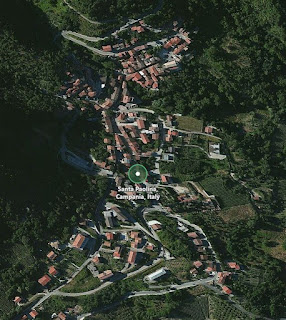 |
| Digitizing death and marriage records is one thing. But notes are just as important. |
 |
| My Italian cheatsheet alongside cemetery notes. |
 |
| Digitizing death and marriage records is one thing. But notes are just as important. |
 |
| My Italian cheatsheet alongside cemetery notes. |
My family didn't pass down any paperwork. There were no birth certificates. No marriage certificates. No citizenship papers.
That's why I'm amazed at the photos other genealogists post of their slumped-over piles of color-coded folders. Their stacks of plastic bins filled with documents. Their rows of acid-free archive-quality storage boxes.
 |
| Whatever paper genealogy documents you have, digitize them! |
I have one fat folder of paper documents related to my family tree. It rests comfortably in my two-drawer file cabinet along with every other piece of paperwork associated with my life.
Wag your finger at me if you must, but I'm here to urge you to digitize your family history! Our goal as family historians is to preserve and share every fact and document of our ancestors' lives.
That requires making their birth certificates, death certificates, and precious photographs:
This seems like an overwhelming task to many family tree researchers. But isn't every aspect of building a family tree overwhelming? For goodness sake, you have 64 great great great great grandparents alone!
Like any other genealogical task, you have to set your goals, divide, and conquer. Choose a branch and dive in with these tasks:
As genealogists, we love living in the past. We treasure each scrap of evidence of our ancestors' lives.
But we've got to plan for the future and the longevity of our hard work.
When it comes to one specific ancestor, like your maternal grandmother, you only want one. But when it comes to preserving her documents and photographs, redundancy, redundancy, redundancy!
 |
| Are you my hometown, Santa Paolina? |
 |
| My great great grandmother's brother provided the missing link. |
You may also enjoy these practical case studies: